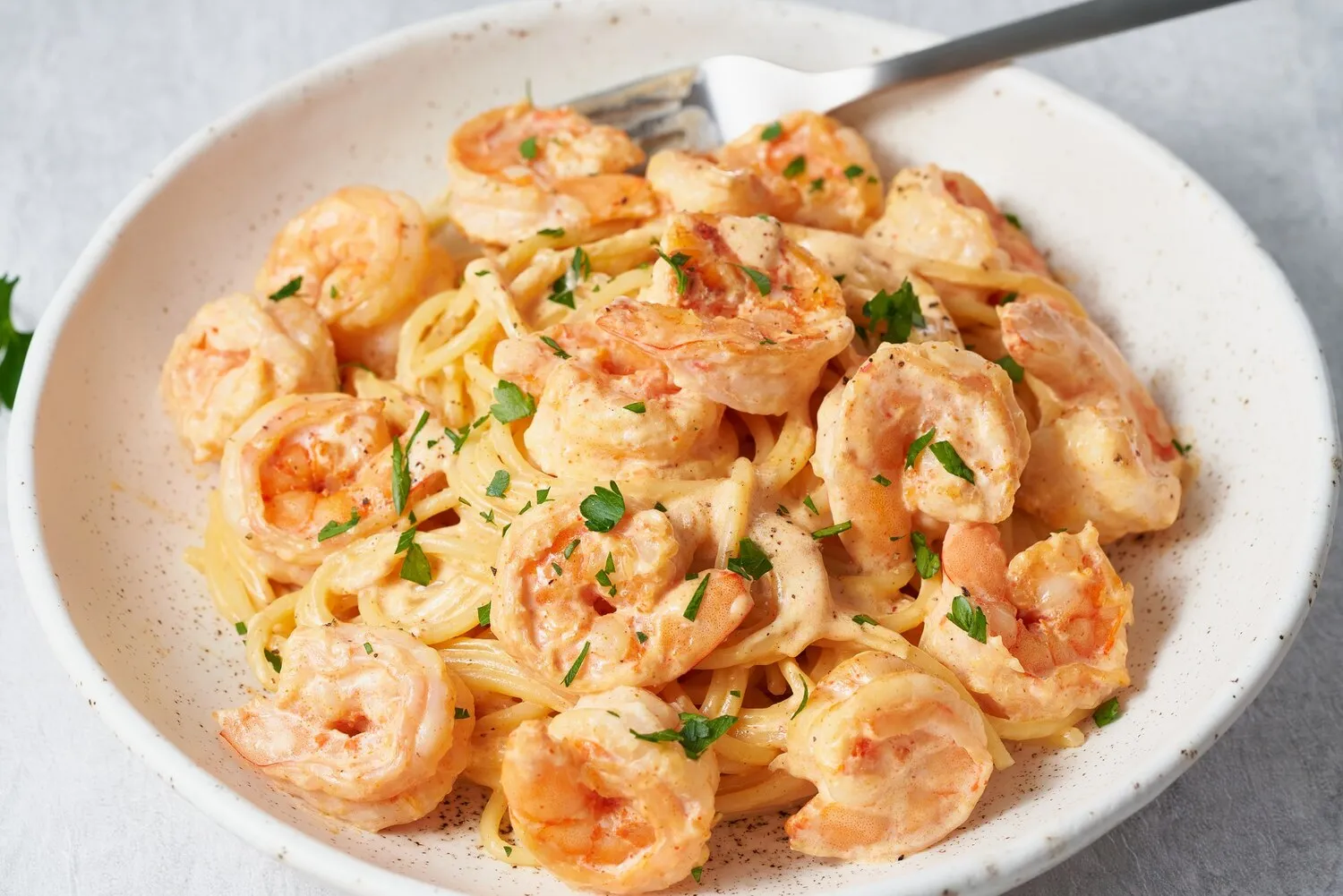
Pasta Scampi
Pasta with prawns, garlic, chilli peppers, tomato sauce, and olive oil.
Nutrition Facts
* The % Daily Value (DV) tells you how much a nutrient in a serving of food contributes to a daily diet. 2,000 calories a day is used for general nutrition advice.
Scampi, also known as Dublin Bay prawns, were historically abundant in the Adriatic Sea and were a common ingredient in coastal Italian cuisine. The dish likely evolved as a simple yet flavorful way to utilize these prawns, combined with readily available ingredients like garlic, olive oil, and pasta. The addition of tomato sauce is a regional variation, common in Southern Italy.
Pasta Scampi is a popular dish in Italy, particularly in coastal regions, and has also gained international recognition. It is often seen as a celebratory dish, suitable for special occasions or a treat. It showcases the Italian emphasis on simple, fresh ingredients and skillful cooking techniques to create a flavorful and satisfying meal.
Regional Variations
The preparation of Pasta Scampi varies significantly by region. Some versions omit the tomato sauce entirely, relying solely on garlic, olive oil, white wine, and parsley. Others might incorporate cream for a richer sauce. The type of pasta used also differs, with linguine, spaghetti, and fettuccine being common choices.
Seafood Tradition
Pasta Scampi embodies Italy's strong tradition of seafood cuisine. The availability of fresh seafood along the coast has led to a wide variety of pasta dishes featuring clams, mussels, shrimp, and other marine delicacies. These dishes often reflect the unique culinary traditions of each coastal region.
Pasta Scampi is characterized by its savory, garlicky, and slightly spicy flavor profile, enhanced by the sweetness of prawns and the acidity of tomato sauce, all bound together by rich olive oil.
The dominant flavor is the briny sweetness of the prawns, complemented by the pungent aroma and sharp taste of garlic. Chili peppers add a touch of heat that balances the richness of the olive oil. Tomato sauce provides a tangy counterpoint, adding depth and complexity to the sauce. High-quality olive oil is crucial, contributing a fruity and peppery note that ties all the flavors together.
Prawn Quality
Use fresh, high-quality prawns whenever possible. Frozen prawns can be used, but ensure they are properly thawed and patted dry before cooking to prevent them from becoming watery.
Garlic Infusion
Don't burn the garlic! Cook it gently in olive oil over medium-low heat to infuse the oil with its flavor. Burnt garlic will impart a bitter taste to the dish.
Pasta Cooking
Cook the pasta al dente, meaning 'to the tooth'. It should be slightly firm when bitten. Reserve some pasta water to add to the sauce, as the starch in the water helps to thicken and emulsify the sauce.
Sauce Consistency
Adjust the amount of pasta water to achieve the desired sauce consistency. A creamy, emulsified sauce is ideal. Avoid a watery or oily sauce.
Wine pairing
Pair with a crisp dry Italian white wine, such as Pinot Grigio or Vermentino.
Explore additional Italian dishes and restaurants
Explore ItalianDiscover top dining spots and culinary experiences in Nancy.
Explore NancyLearn more about the food culture, restaurant scene, and culinary heritage of France.
Explore France
